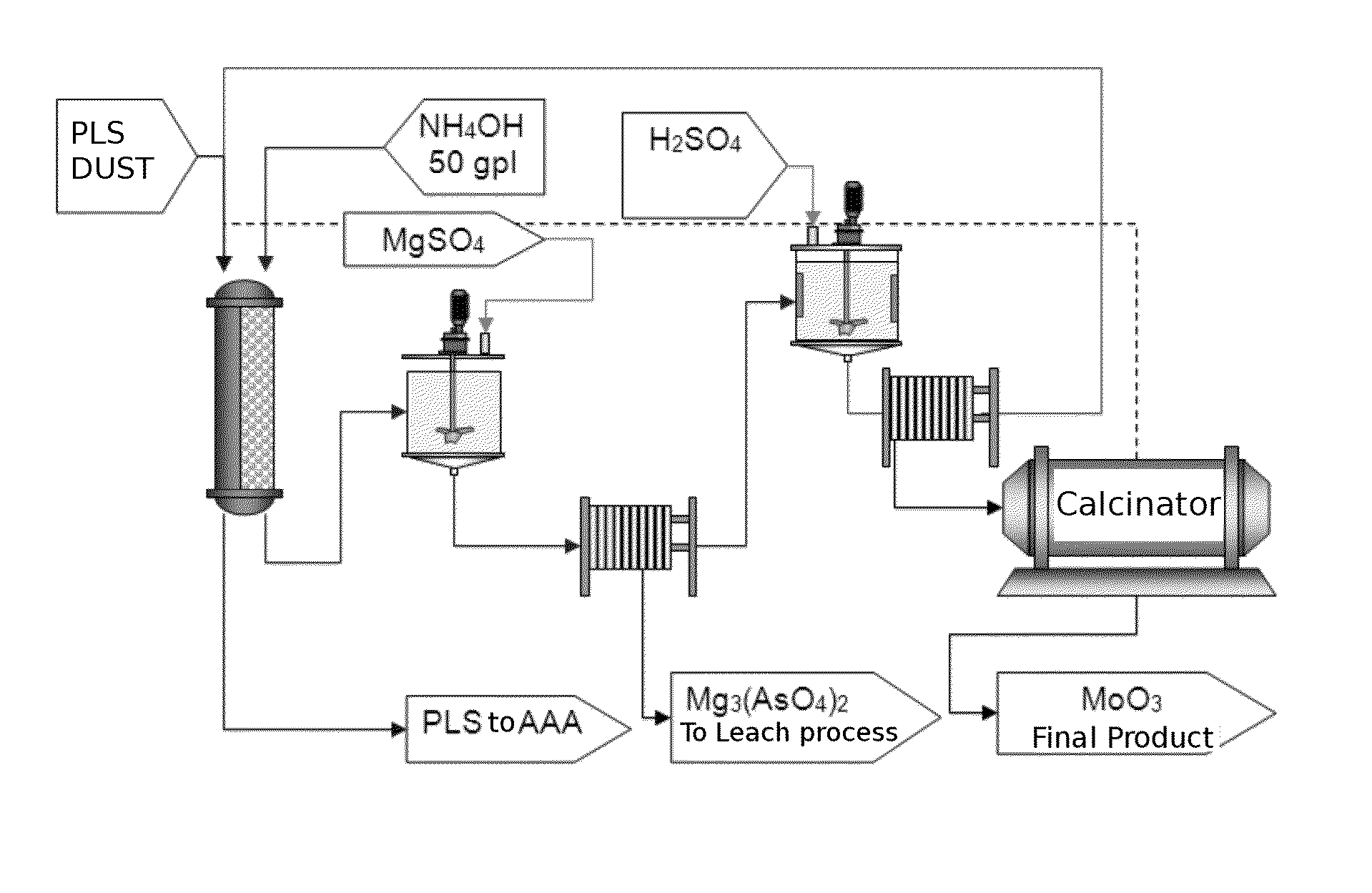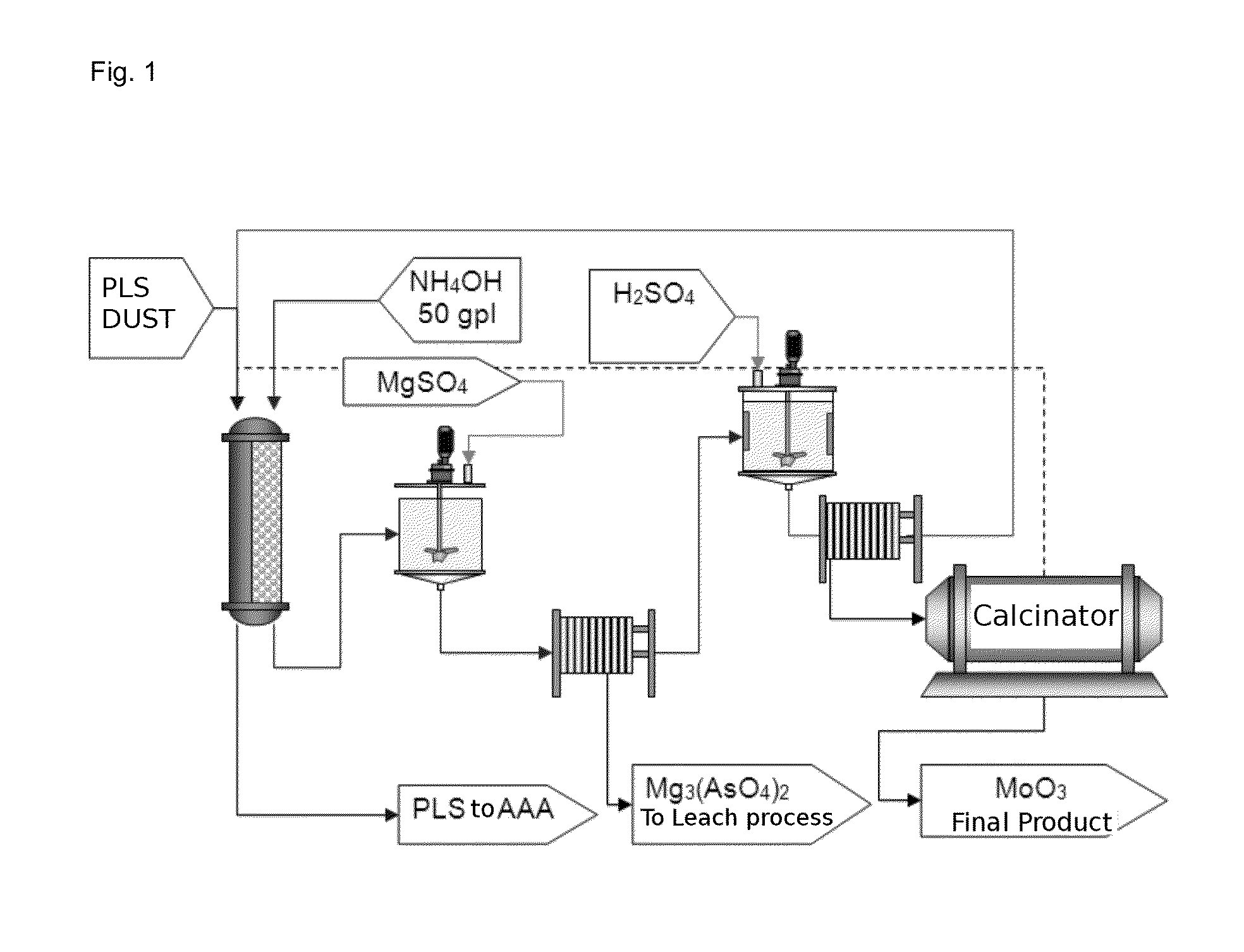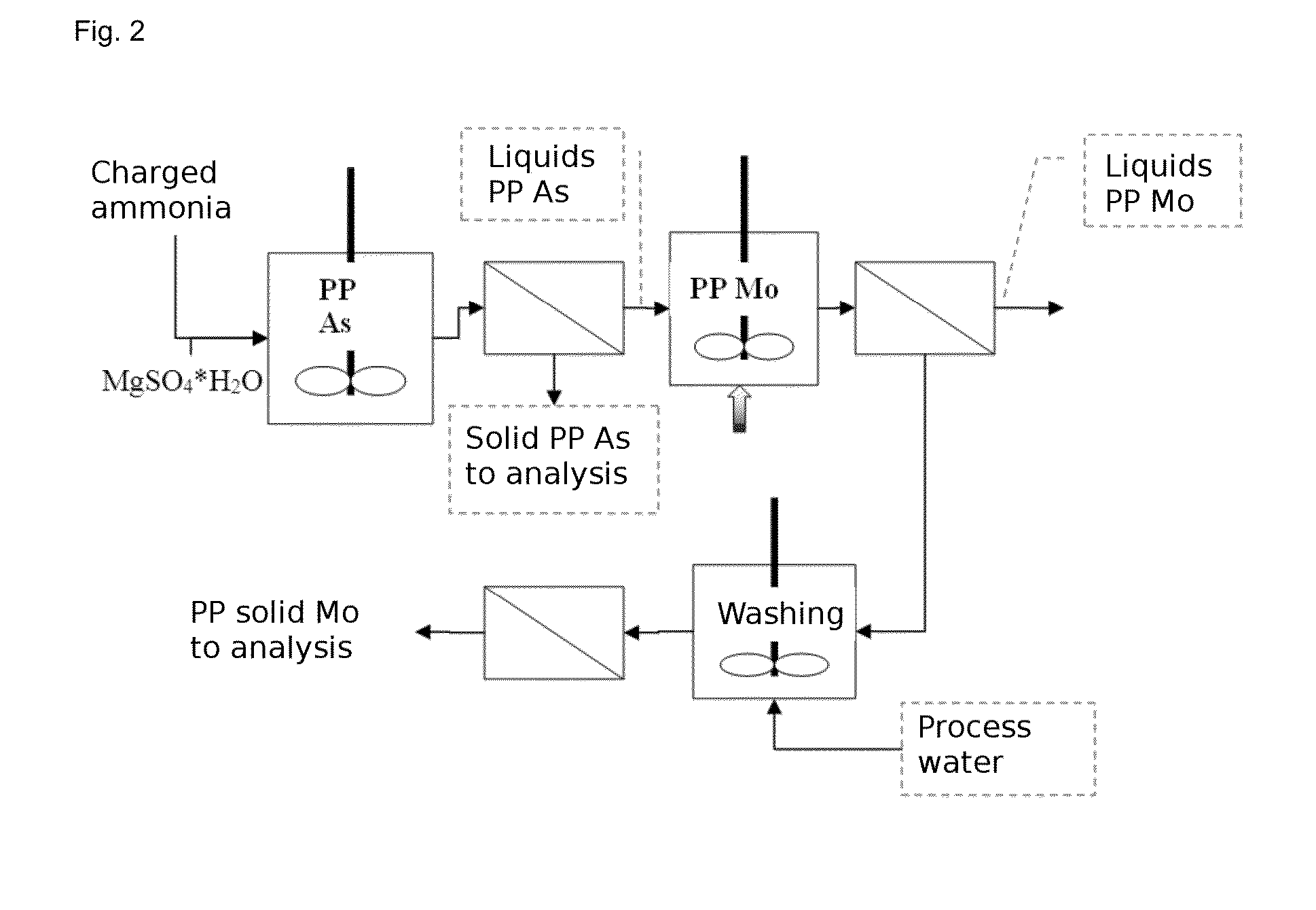Process for recovery of technical grade molybdenum from diluted leaching acid solutions (PLS), with highly concentrated arsenic, from metallurgical residues
a technology of molybdenum and leaching acid, which is applied in the field of recovery of technical grade molybdenum from dil, can solve the problem of inability to recover directly the metal
- Summary
- Abstract
- Description
- Claims
- Application Information
AI Technical Summary
Benefits of technology
Problems solved by technology
Method used
Image
Examples
example of application
[0042]330 L of PLS solution were contacted with 6 L of Lanxess® MP-62 resin (for exemplification, and without limiting the invention). The resin was disposed in a static column which allowed passing PLS solution at a 4.5 l / h flow rate, after this period, a “refine” or Mo-free solution was obtained, as shown in Table 4.
[0043]Afterward, 12 L water were passed, at a 4.5 L / h flow rate for washing the resin. After washing, the resin was regenerated, extracting the captured Mo, passing an alkaline ammonium hydroxide solution (50 g / L NH4OH) through the column. This procedure was performed for 47 cycles of charge / discharge, using in each cycle 330 L of fresh PLS solution. The regenerating solution was not renovated since its concentration increases in each cycle; maintaining the pH near to 9.
TABLE 4PLS solution concentration before and after Mo extraction[Mo] (mg / L) [Sb] (mg / L)[Bi] (mg / L)[As] (mg / L)PLS Solution315937813,840Refine solution26515913,692Charged regenerating solution11,7402,2309...
PUM
| Property | Measurement | Unit |
|---|---|---|
| temperature | aaaaa | aaaaa |
| temperature | aaaaa | aaaaa |
| pH | aaaaa | aaaaa |
Abstract
Description
Claims
Application Information
 Login to View More
Login to View More - R&D
- Intellectual Property
- Life Sciences
- Materials
- Tech Scout
- Unparalleled Data Quality
- Higher Quality Content
- 60% Fewer Hallucinations
Browse by: Latest US Patents, China's latest patents, Technical Efficacy Thesaurus, Application Domain, Technology Topic, Popular Technical Reports.
© 2025 PatSnap. All rights reserved.Legal|Privacy policy|Modern Slavery Act Transparency Statement|Sitemap|About US| Contact US: help@patsnap.com



